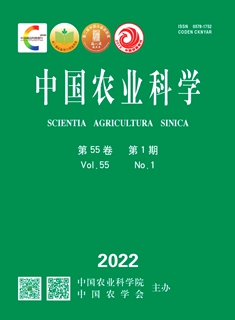[China Daily]Grain yields to grow over next decade
China's grain output is expected to continue steady growth this year and over the next decade, driven by higher crop yields and targeted agricultural policies, according to a new agricultural outlook report released on Sunday by the Ministry of Agriculture and Rural Affairs.
The China Agricultural Outlook (2025-2034), issued by the ministry's market early warning expert team, projects the total grain output this year will reach 709 million metric tons, up 0.4 percent from the previous year. The average grain yield is expected to rise to 5.9 tons per hectare, while total sown acreage will remain stable at about 119 million hectares.
The report forecasts a systemic breakthrough in agricultural productivity over the next 10 years. By 2034, grain yield is projected to increase 7.8 percent to 6.3 tons per hectare, with total output reaching 753 million tons.
Soybean production is expected to grow 2.5 percent this year to 21.17 million tons, as domestic cultivation expands. Meanwhile, soybean imports reached a record 105.03 million tons last year, up 6.5 percent from the previous year.
Brazil, the United States and Argentina were the top three sources for soybeans, with Brazil accounting for approximately 71 percent of total imports, the US 21 percent and Argentina 4 percent.
Xu Shiwei, secretary-general of the market early warning expert committee, said domestic soybean production is rising steadily, supported by improved industrial policies.
"Over the next decade, the country's soybean output is projected to grow at an average annual rate of 5.3 percent, while imports are expected to fall significantly to 79.03 million tons by 2034," Xu said.
Agricultural trade is also expected to see structural changes, with greater diversification of import sources and a notable decline in imports of key commodities such as wheat, corn and soybeans. Total grain imports are projected to drop to 113 million tons by 2034, with an average annual decrease of 3.1 percent, the report said.
While overall agricultural consumption is growing slowly, shifting consumer preferences toward healthier and more diverse diets are influencing both production and trade patterns. Xu said consumption of edible vegetable oil is expected to see a slight decline over the next decade due to rising public awareness of nutrition.
At the report's launch, Jiang Wensheng, vice-minister of agriculture and rural affairs, called for stronger monitoring and early warning systems, as well as enhanced market regulation, in light of rising uncertainties in global and domestic agricultural markets.
Risks from ongoing tariffs and geopolitical tensions could disrupt global food trade and supply chains, Jiang said.
"Volatility in international agricultural prices could also transmit significant shocks to China's domestic markets," he added.
Domestically, Jiang said China must still address challenges such as extreme weather events, pests and diseases, and low beef and dairy prices.
He also emphasized the importance of emerging technologies, including artificial intelligence and big data, in improving forecasting and decision-making.
"We must accelerate the application of AI and digital tools in agriculture," Jiang said. "By innovating how we manage data and predict trends, we can better understand supply and demand dynamics and strengthen the technical foundation for agricultural outlooks."
- [人民日报海外版]中非共商加强农业科技合作2025-11-13
- 优势近缘种为油菜抗性改良提供新路径2025-11-13
- 茶树介导的植食性昆虫互作机理解析2025-11-13
- 中国农业科学院小麦产业专家团积极响应“奋战60天”下沉一线指导秋冬播生产2025-11-13
- [农民日报]中国农业科学院西部农业研究中心召开小麦优质高产与绿色防控技术示范观摩会2025-11-13
- [光明日报]中外院士专家在汉共话新质生产力赋能油料脂质产业可持续发展2025-11-13
- [中国科学报]关键蛋白调控水稻种子萌发率2025-11-12
- 实现桃胶多糖高效高活提取2025-11-12
- [中国科学报]2025年食物营养健康青年科学家座谈会召开2025-11-12







